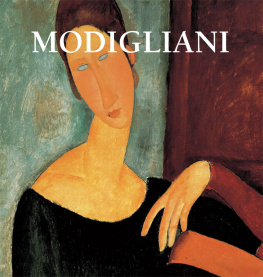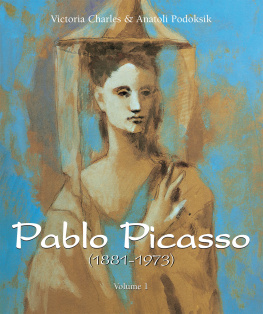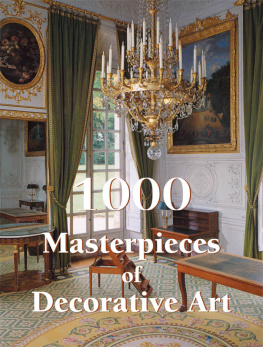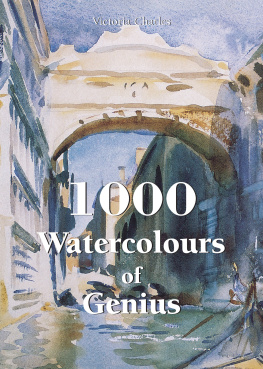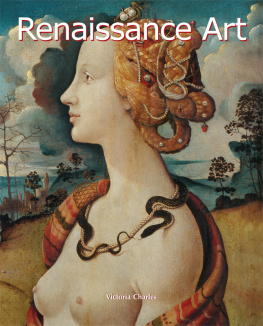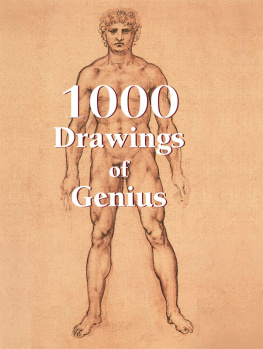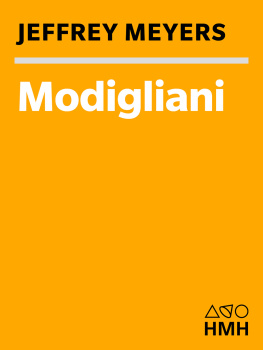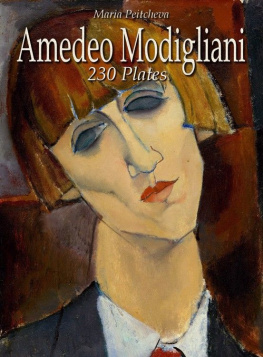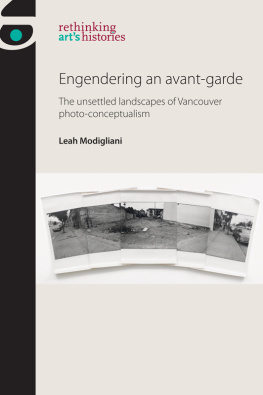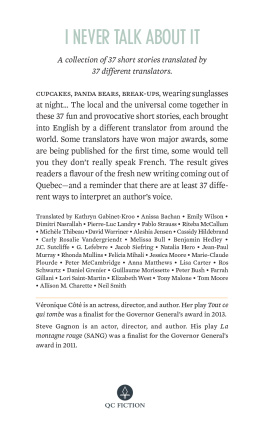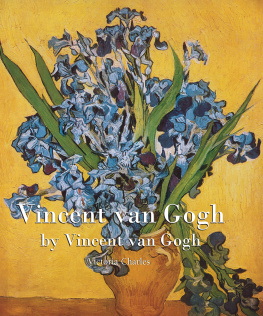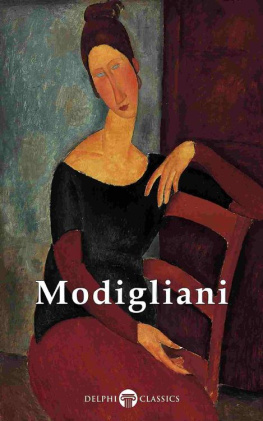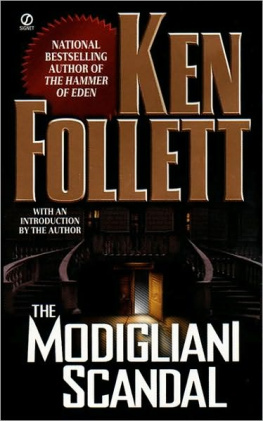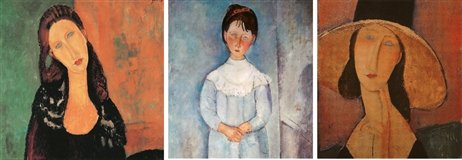
Confidential Concepts, worldwide, USA
Parkstone Press International, New York, USA
ISBN 978-1-78160-600-1
All rights reserved. No part of this may be reproduced or adapted without the permission of the copyright holder, throughout the world.
Unless otherwise specified, copyright on the works reproduced lies with the respective photographers. Despite intensive research, it has not always been possible to establish copyright ownership. Where this is the case, we would appreciate notification.
Amedeo
Modigliani

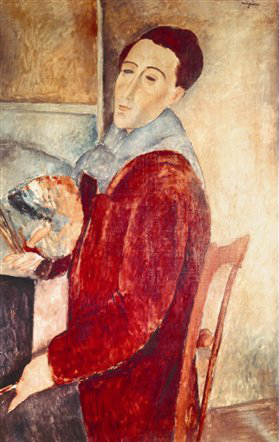
Self-Portrait , 1919.
Oil on canvas, 100 x 65 cm. Museu de Arte
Contemporanea da Universidade de San Paulo, Brazil.
Amedeo Modigliani was born in Italy in 1884 and died in Paris at the age of thirty-five. He was Jewish, with a French mother and Italian father, and so grew up amidst three cultures. A passionate and charming man who had numerous lovers, his unique vision was nurtured by his appreciation of his Italian and classical artistic heritage, his understanding of French style and sensibility, in particular the rich artistic atmosphere of Paris at the turn of the 20th century, and his intellectual awareness inspired by Jewish tradition.
Unlike other avant-garde artists, Modigliani painted mainly portraits typically unrealistically elongated with a melancholic air and nudes, which exhibit a graceful beauty and strange eroticism.
In 1906, Modigliani moved to Paris, the centre of artistic innovation and the international art market. He frequented the cafes and galleries of Montmartre and Montparnasse, where many different groups of artists congregated. He soon became friends with the post-impressionist painter (and alcoholic) Maurice Utrillo (1883 1955) and the German painter Ludwig Meidner (1844 1966), who described Modigliani as the last, true bohemian (Doris Krystof, Modigliani ).
Modigliani s mother sent him what money she could afford, but he was desperately poor and had to change lodgings frequently, sometimes abandoning his work when he had to run away without paying the rent. Fernande Olivier, the first girlfriend in Paris of Pablo Picasso (1881 1973), describes one of Modigliani s rooms in her book Picasso and his Friends (1933): A stand on four feet in one corner of the room. A small and rusty stove on top of which was a yellow terracotta bowl that was used for washing in; close by lay a towel and a piece of soap on a white wooden table. In another corner, a small and dingy box-chest painted black was used as an uncomfortable sofa. A straw-seated chair, easels, canvases of all sizes, tubes of colour spilt on the floor, brushes, containers for turpentine, a bowl for nitric acid (used for etchings), and no curtains.
Modigliani was a well-known figure at the Bateau-Lavoir, the celebrated building where many artists, including Picasso, had their studios. It was probably given its name by the bohemian writer and friend of both Modigliani and Picasso, Max Jacob (1876 1944).
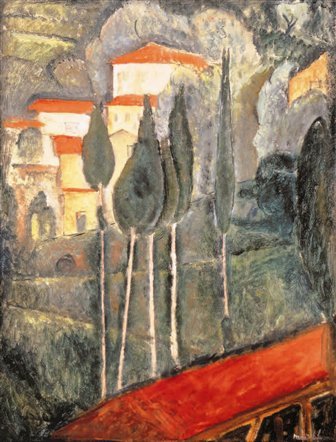
Landscape in the Midi , 1919.
Oil on canvas, 60 x 45 cm.
Private collection.
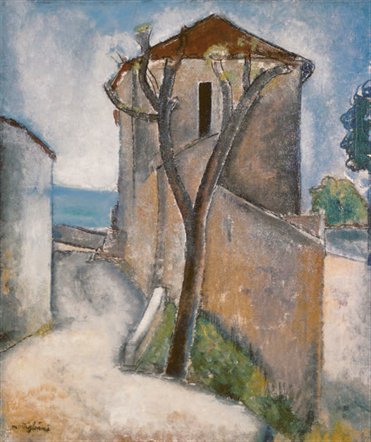
. Tree and Houses , 1919.
Oil on canvas, 57 x 45 cm.
Private collection.
While at the Bateau-Lavoir, Picasso painted Les Demoiselles dAvignon (1907), the radical depiction of a group of prostitutes that heralded the start of Cubism.
Other Bateau-Lavoir painters, such as Georges Braque (1882 1963), Jean Metzinger (1883 1956), Marie Laurencin (1885 1956), Louis Marcoussis (1883 1941), and the sculptors Juan Gris (1887 1927), Jacques Lipchitz (1891 1973) and Henri Laurens (1885 1954) were also at the forefront of Cubism.
The vivid colours and free style of Fauvism had just become popular and Modigliani knew the Bateau-Lavoir Fauves, including Andr Derain (1880 1954) and Maurice de Vlaminck (1876 1958), as well as the Expressionist sculptor Manolo (Manuel Martinez Hugu ; 1876 1945), and Chaim Soutine (1893 1943), Mo se Kisling (1891 1953), and Marc Chagall (1887 1985). Modigliani painted portraits of many of these artists.
Max Jacob and other writers were drawn to this community. These included the poet and art critic (and lover of Marie Laurencin) Guillaume Apollinaire (1880 1918), the Surrealist Alfred Jarry (1873 1907), the writer, philosopher and photographer Jean Cocteau (1889 1963), with whom Modigliani had a mixed relationship, and Andr Salmon (1881 1969), who went on to write a dramatized novel based on Modigliani s unconventional life. The American writer and art collector Gertrude Stein (1874 1946) and her brother Leo were also regular visitors.
Modigliani was known as Modi to his friends, no doubt a pun on peintre maudit (accursed painter). He himself believed that the artist had different needs and desires, and should be judged differently from other, ordinary, people a theory he came upon by reading such authors as Friedrich Nietzsche (1844 1900), Charles Baudelaire (1821 1867), and Gabriele D Annunzio (1863 1938). Modigliani had countless lovers, drank copiously, and took drugs. From time to time, however, he also returned to Italy to visit his family and to rest and recuperate.
In childhood, Modigliani had suffered from pleurisy and typhoid, leaving him with damaged lungs. His precarious state of health was exacerbated by his lack of money and unsettled, self-indulgent lifestyle. He died of tuberculosis; his young fianc e, Jeanne H buterne, pregnant with their second child, was unable to bear life without him and killed herself on the following morning.
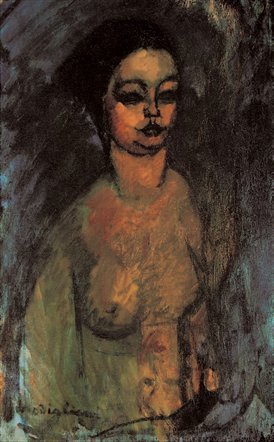
. Nude , circa 1908.
Oil on canvas, 61 x 38 cm.
Perls Gallery, New York.

. The Beggar of Livorno , 1909.
Oil on canvas, 66 x 52,7 cm.
Private collection.

. The Cellist , 1909.
Oil on canvas, 130 x 80 cm.
Private collection.
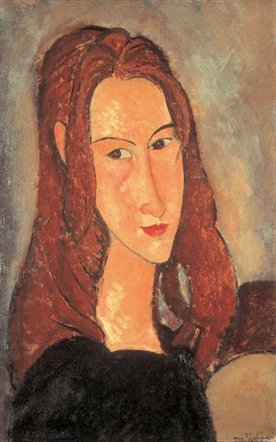
Portrait of Jeanne Hbuterne - Head
in profile (Young Redhead) , 1918.
Oil on canvas, 46 x 29 cm. Private collection.
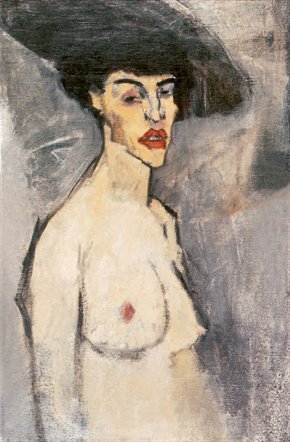
Female Nude with Hat , 1907-08.
Oil on canvas, 80,6 x 50,1 cm. Reuben and
Edith Hecht Museum, University of Hafa, Israel.
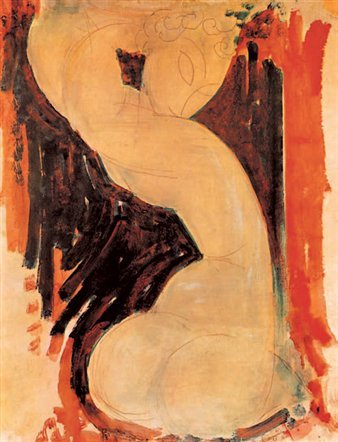
Next page
